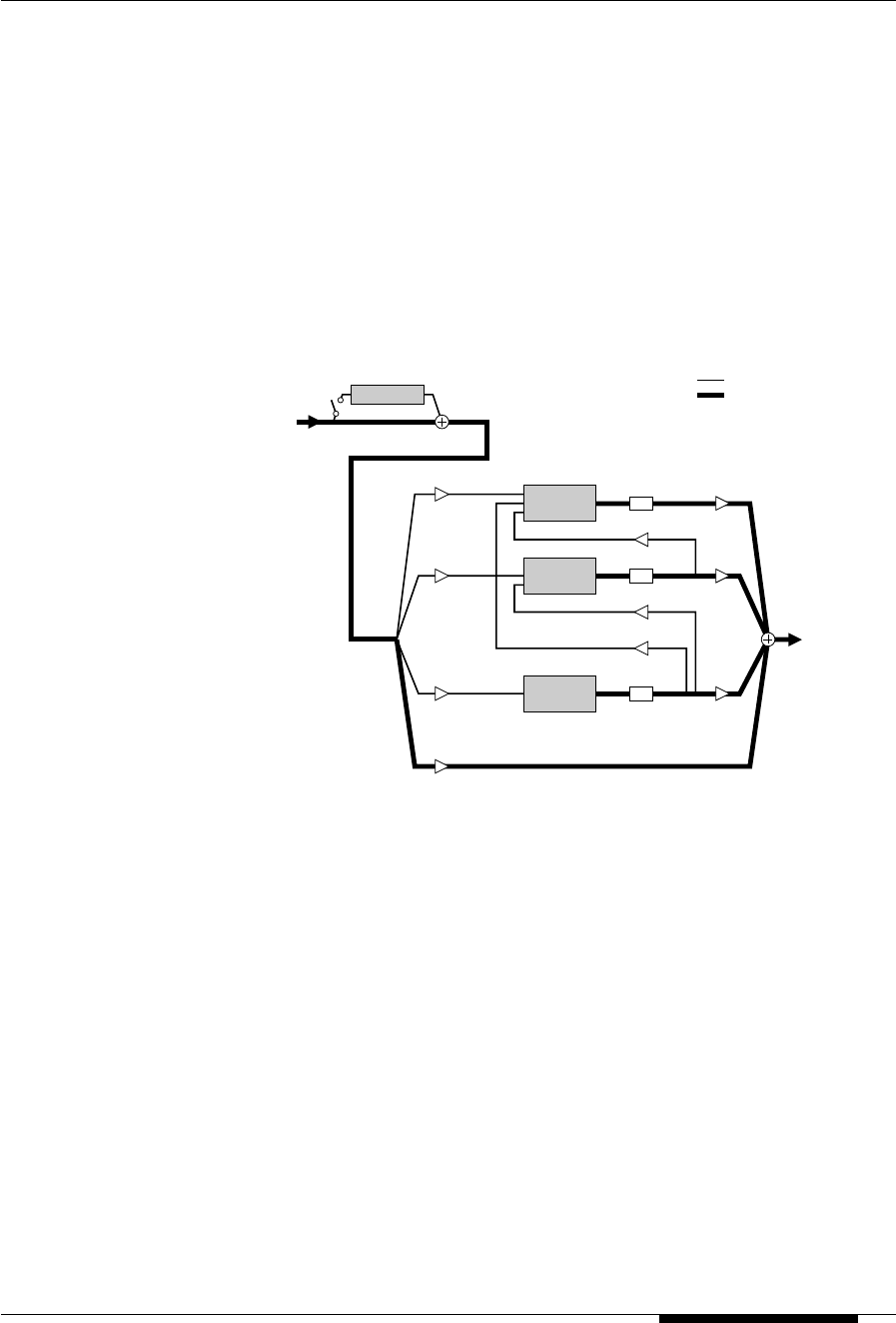
87
parameters available in the PLAY mode (pages 32 and 41). The
“SendCho→Rev” parameter (page 91) can be used to send some or all of the
output from the chorus stage to the reverb stage. If the the “SendCho→Rev”
parameter is set to maximum and the “ChoRtn” parameter is set to “000”, the
chorus stage and reverb stage are effectively connected in series.
● When the Variation Stage is a System Effect
Effects & Effect Editing
Dry/Wet
RevSend
SendCho→Rev
ChoSend
DryLevel DryLine
RevRtn
ChoRtnChoPan
SendVar→Cho
SendVar→Rev
VarSend
VarRtnVarPan
RevPan
Monaural
Stereo
Output
Distortion
Variation
Reverb
Chorus
Tone
generator
In this case the output from the tone generator is first sent to the distortion
stage, and the distortion effect signal is then mixed back into the main signal
line via the corresponding “Dry/Wet” parameter. In this connection mode only
the distortion stage is functioning as an insertion effect. After the distortion
stage the signal can be sent to the reverb, chorus and variation stages via the
“RevSend”, “ChoSend”, and “VarSend” parameters available in the PLAY mode
(pages 35 and 39). The output from all three of these stages is stereo, and the
effect signal can be mixed back in with the main signal line via the “RevRtn”,
“ChoRtn”, and “VarRtn” parameters available in the PLAY mode (pages 32, 33
and 41). The “SendCho→Rev” parameter (page 32) can be used to send some
or all of the output from the chorus stage to the reverb stage. If the
“SendCho→Rev” parameter is set to maximum and the “ChoRtn” parameter is
set to “000”, the chorus stage and reverb stage are effectively connected in
series. The “SendVar→Rev” and “SendVar→Cho” parameters (page 93) can be
used to send some or all of the output from the variation stage to the reverb and
chorus stages, respectively.


















